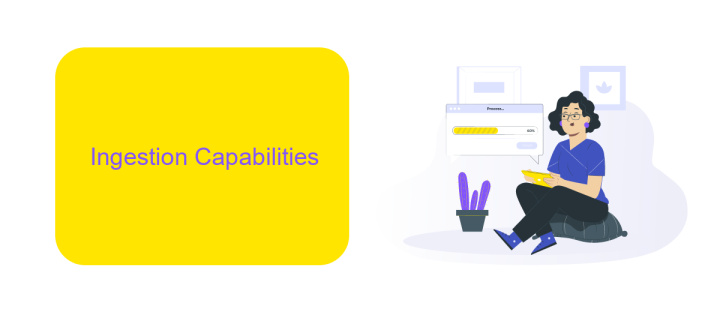Airbyte Vs Rudderstack
When it comes to modern data integration and pipeline management, Airbyte and RudderStack are two prominent platforms that stand out. Both offer robust solutions for syncing data across various sources and destinations, yet they cater to different needs and use cases. This article delves into a comparative analysis of Airbyte and RudderStack, exploring their features, strengths, and potential limitations.
Introduction and Overview
In the realm of data integration, Airbyte and Rudderstack are two prominent solutions that have garnered significant attention. Both platforms aim to streamline the process of connecting various data sources, making it easier for businesses to manage and analyze their data efficiently. Understanding the nuances and capabilities of each can help organizations make informed decisions about which tool best suits their needs.
- Airbyte: An open-source data integration platform known for its flexibility and extensive connector library.
- Rudderstack: A customer data platform (CDP) that focuses on collecting, storing, and routing customer data to various destinations.
- ApiX-Drive: A versatile service that simplifies the process of setting up integrations, offering a wide range of pre-built connectors and automation tools.
Choosing between Airbyte and Rudderstack depends on specific business requirements, such as the need for open-source solutions, the importance of customer data management, or the desire for a user-friendly integration setup like that offered by ApiX-Drive. By evaluating these factors, businesses can ensure they select the most appropriate tool to enhance their data integration workflows.
Ingestion Capabilities

Airbyte and Rudderstack both offer robust ingestion capabilities, but they cater to different needs and use cases. Airbyte is known for its extensive range of connectors, allowing users to integrate with a wide variety of data sources and destinations. It supports both structured and unstructured data, making it highly versatile for different data ingestion requirements. Additionally, Airbyte's open-source nature means that users can customize and extend connectors as needed, ensuring a tailored fit for their specific data pipelines.
Rudderstack, on the other hand, focuses on real-time event streaming and data routing. It excels in capturing and processing event data from web and mobile applications, making it ideal for real-time analytics and customer data platforms. Rudderstack's integration with services like ApiX-Drive further enhances its ingestion capabilities, allowing users to easily automate and manage their data workflows. ApiX-Drive provides a user-friendly interface for setting up integrations, ensuring seamless data flow between various applications and services. This makes Rudderstack a strong choice for businesses looking to streamline their event data ingestion and processing.
Destination Support

When comparing Airbyte and Rudderstack, one of the key aspects to consider is their destination support. Both platforms offer robust options, but there are some differences worth noting.
- Airbyte: Airbyte supports over 120 destinations, including popular data warehouses like Snowflake, BigQuery, and Redshift. It also integrates seamlessly with databases such as PostgreSQL and MySQL, as well as various SaaS applications.
- Rudderstack: Rudderstack, on the other hand, offers support for over 80 destinations. This includes major data warehouses, cloud storage solutions, and analytics tools. Rudderstack also provides extensive support for real-time event streaming to destinations like Google Analytics and Mixpanel.
In addition to these platforms, services like ApiX-Drive can further simplify the integration process. ApiX-Drive offers a user-friendly interface to automate data transfers between different applications, making it easier to manage and sync your data across various destinations. This can be particularly useful for businesses looking to streamline their data workflows without extensive technical expertise.
Data Transformation and Enrichment

Data transformation and enrichment are crucial aspects when comparing Airbyte and Rudderstack. Both tools offer robust capabilities to handle data transformation, ensuring that raw data is converted into a usable format before it reaches the final destination.
Airbyte provides a flexible and user-friendly interface for data transformation. It allows users to define custom transformations using SQL or Python, making it highly adaptable to various data needs. Rudderstack, on the other hand, focuses on real-time data transformation, enabling businesses to process and enrich data as it flows through the pipeline.
- Airbyte: Custom transformations using SQL and Python
- Rudderstack: Real-time data transformation and enrichment
- ApiX-Drive: Seamless integration setup and automation
Both platforms have their unique strengths in data transformation and enrichment. Airbyte's flexibility with custom transformations makes it suitable for complex data workflows, while Rudderstack's real-time capabilities are ideal for businesses needing immediate data processing. Additionally, tools like ApiX-Drive can further enhance these processes by simplifying integration setups and automating workflows, ensuring seamless data management.
Data Governance and Security
When it comes to data governance and security, both Airbyte and Rudderstack offer robust solutions to ensure your data is managed and protected effectively. Airbyte provides extensive logging and monitoring features, allowing users to track data flow and transformations in real-time. This transparency is crucial for maintaining data integrity and compliance with industry standards. Additionally, Airbyte supports role-based access control (RBAC), ensuring that only authorized personnel can access sensitive data.
Rudderstack, on the other hand, emphasizes data privacy and security through its end-to-end encryption and anonymization features. It allows for granular control over data access and permissions, making it easier to comply with regulations such as GDPR and CCPA. For users seeking to streamline their data integration processes, services like ApiX-Drive can be an invaluable addition. ApiX-Drive simplifies the setup of data pipelines between various platforms, enhancing both the governance and security of your data infrastructure. Whether you choose Airbyte or Rudderstack, integrating with ApiX-Drive ensures a more efficient and secure data management system.


FAQ
What are the primary use cases for Airbyte and Rudderstack?
How do Airbyte and Rudderstack handle data transformation?
Can Airbyte and Rudderstack be self-hosted?
What are the integration capabilities of Airbyte and Rudderstack?
Are there alternative tools for automating and setting up integrations?
Apix-Drive is a simple and efficient system connector that will help you automate routine tasks and optimize business processes. You can save time and money, direct these resources to more important purposes. Test ApiX-Drive and make sure that this tool will relieve your employees and after 5 minutes of settings your business will start working faster.

